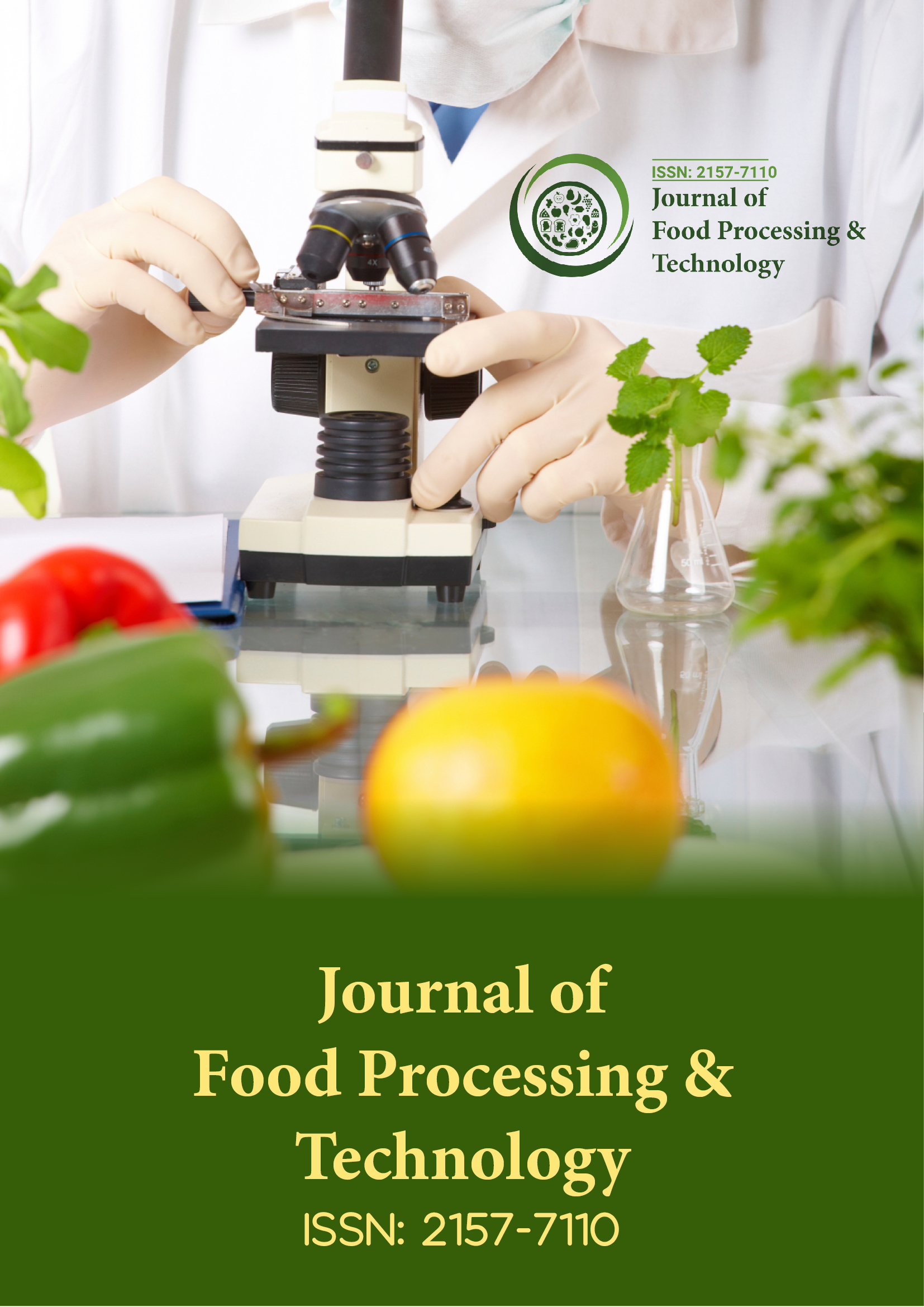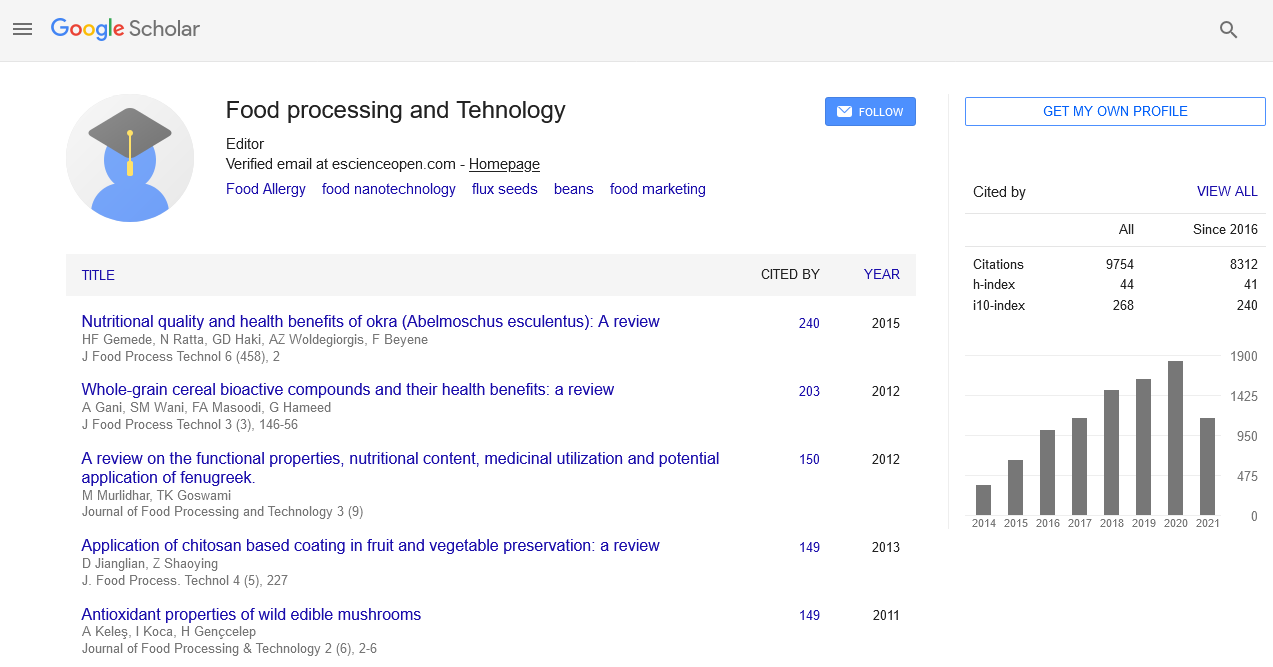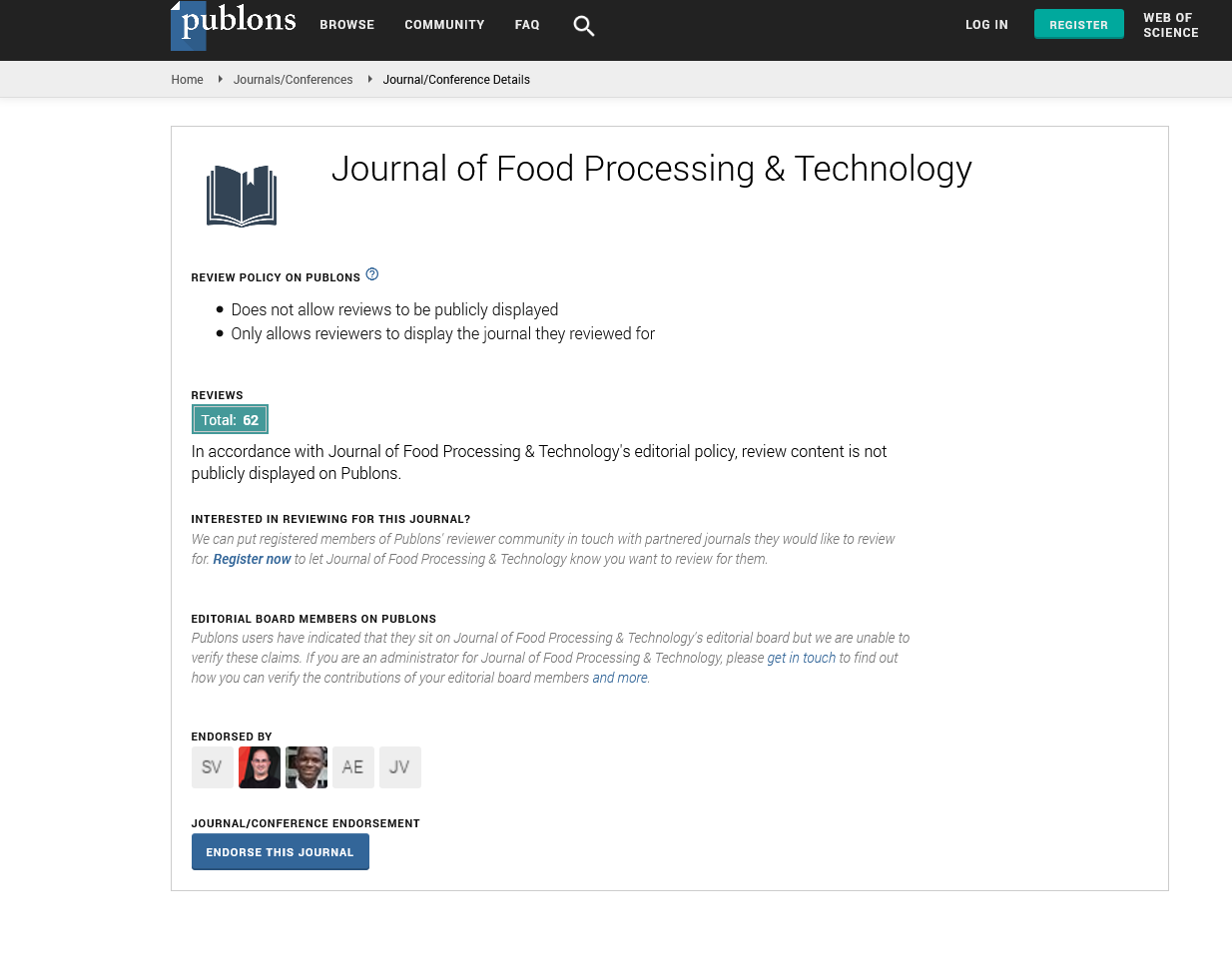Indexed In
- Genamics JournalSeek
- Academic Keys
- JournalTOCs
- China National Knowledge Infrastructure (CNKI)
- Access to Global Online Research in Agriculture (AGORA)
- Centre for Agriculture and Biosciences International (CABI)
- RefSeek
- Directory of Research Journal Indexing (DRJI)
- Hamdard University
- EBSCO A-Z
- OCLC- WorldCat
- Scholarsteer
- SWB online catalog
- Publons
- Euro Pub
- Google Scholar
Useful Links
Share This Page
Journal Flyer

Open Access Journals
- Agri and Aquaculture
- Biochemistry
- Bioinformatics & Systems Biology
- Business & Management
- Chemistry
- Clinical Sciences
- Engineering
- Food & Nutrition
- General Science
- Genetics & Molecular Biology
- Immunology & Microbiology
- Medical Sciences
- Neuroscience & Psychology
- Nursing & Health Care
- Pharmaceutical Sciences
Strategies to reduce the environmental impact of meat packaging
26th Euro-Global Summit on Food and Beverages
April 17-18, 2023 | Rome, Italy
Harrison Tetteh, Merce Balcells, Alba Bala, Pere Fullana-i-Palmer, Maria Margallo, Ruben Aldaco and Rita Puig
University of Lleida, Spain ESCI-UPF, Spain University of Cantabria, Spain
Scientific Tracks Abstracts: J Food Process Technol
Abstract:
Statement of the problem: Packaging plays an important role, especially in meat products, via safety and shelflife extension. Nevertheless, it must be designed to be as environmentally friendly as possible. Therefore, the aim of this study is to environmentally assess and compare 3 chicken meat packaging types and to obtain from this comparison, the most important strategies to improve the environmental performance of meat packaging. The 3 types of packaging evaluated were: Poly-Ethylene (PE) bag, Poly-Ethylene Terephthalate (PET) tray and film and multi-layer Poly-Styrene (PS)/Poly-Vinyl Chloride (PVC) tray with PVC filmMethodology & theoretical orientation: The assessment was performed using LCA methodology and EP 3.0 impact assessment method. Findings: The PE bag performed best in the climate change impact category while the PET tray was the worst. This is partly due to the fact that the PE bag has the lowest weight per kg of meat content compared with the others. Considering the recyclability of the 3 packaging types, the multi-layer PS/PVC tray is not recyclable while the PET tray is the most recyclable, but this does not change the order of the environmental performance of the packaging types. When 20% recycled content (rPET) was included in the PET packaging, as the only material among the three, whose recycling and secondary use as food contact material is safety assessed in Europe, this decreased its climate change impact by ~9%, but it was still the worst performing packaging among the three.Conclusion: Although packaging plays an important role in meat products, large differences can be found when comparing the environmental impact of different types of packaging, Increasing the recyclability and recycled content of packaging need to be promoted to meet circular economy objectives. However, the weight of the packaging should not be ignored as it affects the environmental impact.
Biography :
Harrison Tetteh holds a master’s degree in environmental engineering and sustainable energy from Rovira and Virgili University, Spain and currently pursuing his doctorate at the University of Lleida, Spain, with a research focus on environmental performance evaluation and circularity improvement of agri-food products and their packaging. He is in his second year of the PhD program and has one journal publication and two international conference presentations (an oral and a poster) to his credit. Moreover, he is a recipient of the Joan Oró grant (FI 2021), to support his PhD studies, generously provided by the Secretariat for Universities and Research of the Ministry of Business and Knowledge of the Government of Catalonia, Spain and the European Social Fund.


